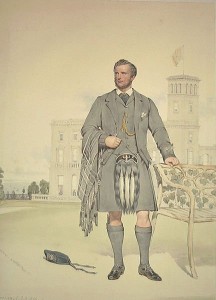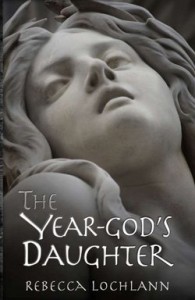
Relevant History welcomes back Warren Bull, award-winning author of two novels on Kindle about Abraham Lincoln as an attorney (Abraham Lincoln for the Defense and Death in the Moonlight), plus a collection of historically-themed short stories, Murder Manhattan Style. His Young Adult novel, Heartland, about a family living in “Bleeding Kansas,” is available on Kindle and, in paperback, from Avignon Press. His short stories have been published in several anthologies and other venues including Alfred Hitchcock’s Mystery Magazine, Sniplits, The Back Alley, and Mysterical-E. For more information, check his web site and group blog.
*****
Some people argue history happens when the right person shows up at the right time and place under conditions, which facilitate change. To some extent I agree with this idea. On the other hand, I contend that an individual can take steps to change history even when time, place and conditions are less than ideal.
Not Part of the Plan
In Bloomington, Illinois on May 29, 1856 the new Republican Party had an organizational meeting. A coalition was emerging from a political party known as the Whigs, which had both conservative and liberal members, men in the Know-Nothing movement, former Democrats and current abolitionists.
Members had a single idea in common, i.e., opposition to the spread of slavery to new territories and states of the United States.
The main organizer, Paul Selby, could not attend. He had been severely beaten by a pro-slavery mob on the streets of his hometown and was left too injured to travel. The night before the organizing convention, Orville Browning met with leaders of the different factions and after considerable discussion and debate, they came up with a compromise agenda and a list of speakers for the convention. It did not include a circuit-riding attorney and former United States Representative whose opposition to the Mexican-America war eight years earlier left him very unpopular with voters. In other words, Abraham Lincoln was among the hopeful, ambitious men left off the agenda.

The convention agreed on a candidate for Governor. Lincoln was appointed chair of a committee to select candidates for lesser state offices, a necessary but secondary position within the party. The day wore on with others making speeches and positioning themselves for notice within the new Republican Party of Illinois. About 5:30 PM, the time scheduled to adjourn, friends of Lincoln in the crowd began to call his name and ask him to speak. It may well be that his reputation for delivering jokes and telling tall tales encouraged some in the audience to hope he would help end the day with a touch of levity and good feeling.
Sitting in the audience with time ticking away, ambitious consummate politician Abraham Lincoln realized he now had a chance, perhaps the only chance he would ever have, to elevate his status within the new state Republican Party. If he did nothing, Lincoln would very likely remain someone
asked to nominate and support other men for state and national offices.
Lincoln rose and said, “I believe I will say a few words from here.” Delegates shouted, asking him to speak from the podium. Lincoln ambled to the front clutching a few notes he had scribbled over the last two days.
And then…
Lincoln delivered what has come to be known as “the lost speech.” He spoke for what was then a short time—ninety minutes. He talked with such eloquence that reporters (and even his law partner) assigned to transcribe the words got so caught up in the speech they stopped taking notes. With the
rest of the audience, they listened and cheered. It’s impossible to know exactly what Lincoln said. Observers agree that early in the speech he calmly countered angry calls from a earlier speaker for invading Kansas with Sharps rifles with something like, “No, my friends, I’ll tell you want we’ll do. We’ll wait until November [the 1856 presidential election] and then we’ll shoot paper ballots at them.”
Observers also agree that after the calm opening Lincoln started to rouse the emotions of the crowd. Although we do not know the details of what he said, Lincoln had spent much of the prior two years speaking in opposition to an act of Congress, which allowed the extension of slavery into new territories and states. He constantly sharpened his arguments and learned from audiences what phrasing best elicited emotional responses. There is general agreement that close to the end of his speech he said something like, “We say to our Southern brethren, ‘We won’t go out of the union and you shan’t.'” At the end of the speech delegates surrounded him cheering, clapping pounding him on the back and pumping his hand.
It’s likely the speech was highly partisan. Lincoln made no effort to produce a version of the speech for publication as he did with many of his speeches. He may well have discouraged others from doing so. I suspect, having accomplished his goal, Lincoln did not lose the speech; he abandoned it. I believe Lincoln was aware, even then, of the importance of avoiding inflammatory language on the national stage.
Barely On The Agenda
On August 28, 1963, the one hundredth anniversary of Abraham Lincoln’s Emancipation Proclamation, The March on Washington for Jobs and Freedom took place in Washington, D. C. Planned by the head of the march, A. Philip Randolf, and organized by Bayard Rustin, the event coordinated efforts by six civil rights organizations, labor and religious groups, singers and artists. Between 200,000 and 300,000 protestors attended. There were speeches by leaders of the various sponsoring groups, and a speech written by James Baldwin was read by actor Charlton Heston. Mahalia Jackson, Marian Anderson, Bob Dylan, Joan Baez, Josh White, and Peter, Paul and Mary performed songs.

Late in the afternoon as the event was winding down, Martin Luther King, Jr. rose at the not-quite-prime time he had been allotted by the better-known organizers and gave a seventeen minute speech he had carefully written out before. His remarks were scheduled sixteenth out of eighteen events on the day’s schedule. He was to be followed by a pledge by the organizer, A. Philip Randolf, and the benediction. King softened some of the earlier rhetoric by arguing against protest degenerating into violence.
And then…
According to what may be a modern legend, Mahalia Jackson, called out, “Tell them about your dream, Martin.”
Without notes, speaking on themes he had used many times before, King delivered an eloquent oration incorporating the American Dream and scriptural reference beginning, “I have a dream.”
King took the risk of speaking from his heart on an occasion when little was expected from him. He went from one of the civil rights leaders in the United States to the preeminent civil rights leader. He gave voice to generations of oppressed and provided a vocabulary for all human rights for all time.
Lincoln and King each seized a moment when little was expected from him to capture and ignite the hearts and souls of an audience, thereby creating an immediate stir and, more importantly, setting up future opportunities that each man would use on the way to becoming a major influence in determining the direction of American history.
*****

A big thanks to Warren Bull. He’ll give away a signed paperback copy of Murder Manhattan Style to someone who contributes a comment on my blog this week. I’ll choose the winner from among those who comment by Saturday at 6 p.m. ET. Delivery is available within the U.S. only.
**********
Did you like what you read? Learn about downloads, discounts, and special offers from Relevant History authors and Suzanne Adair. Subscribe to Suzanne’s free newsletter.
















